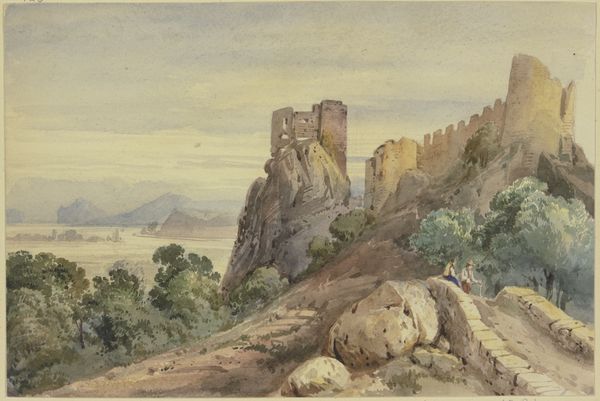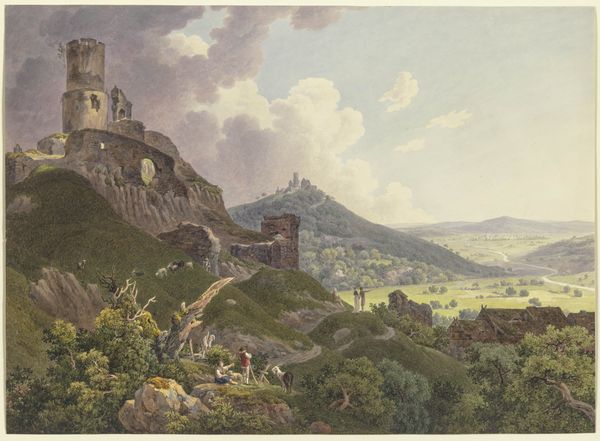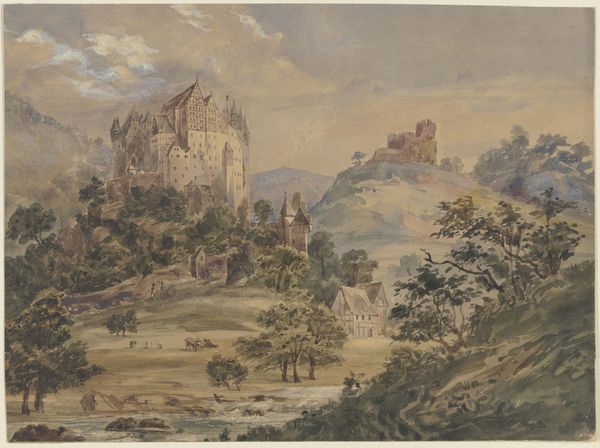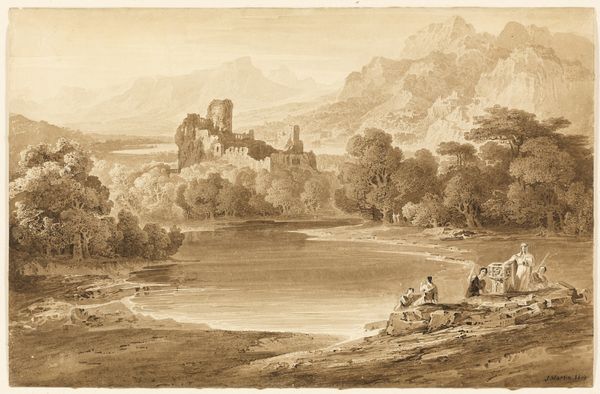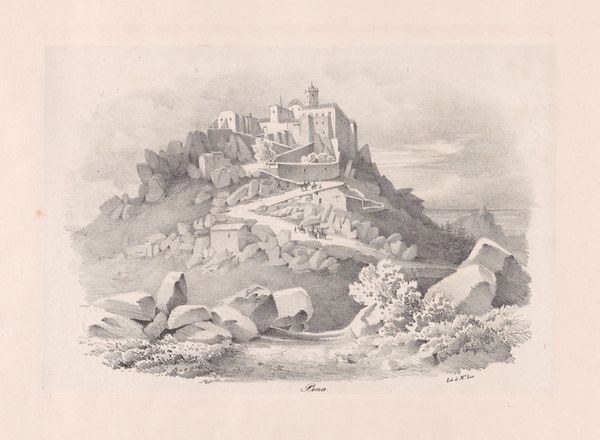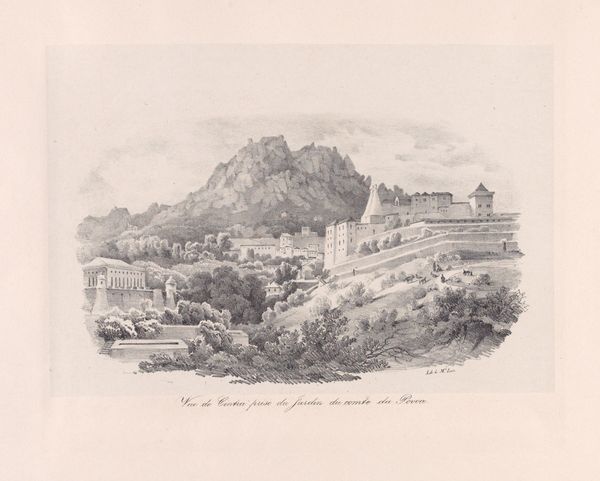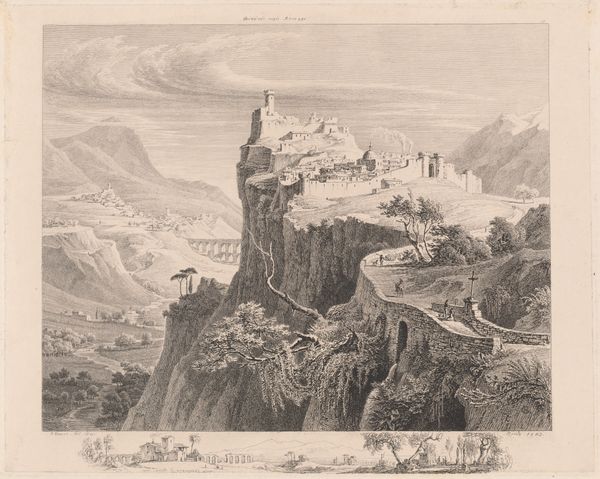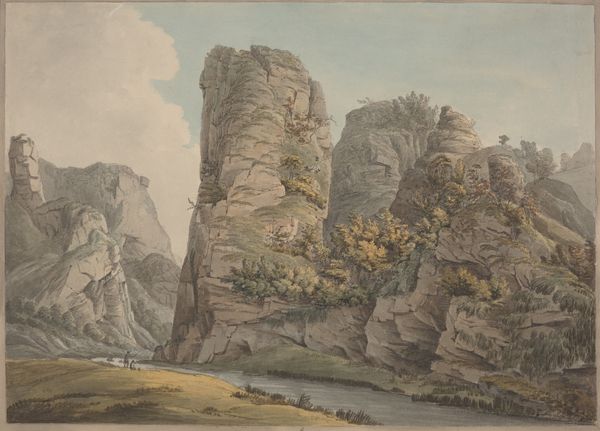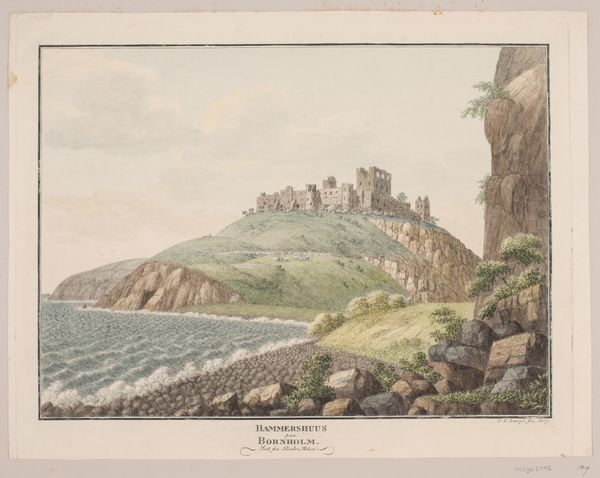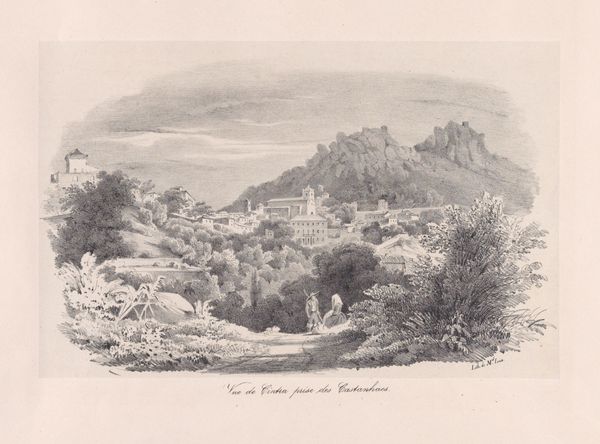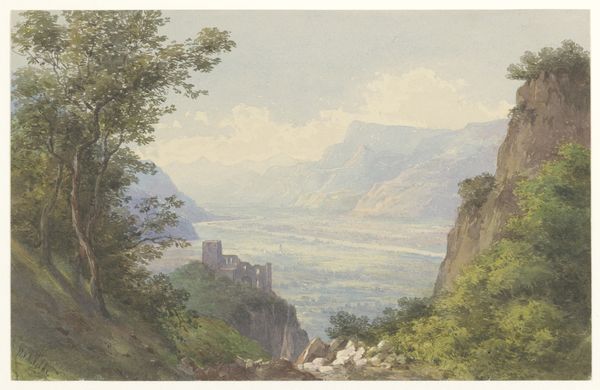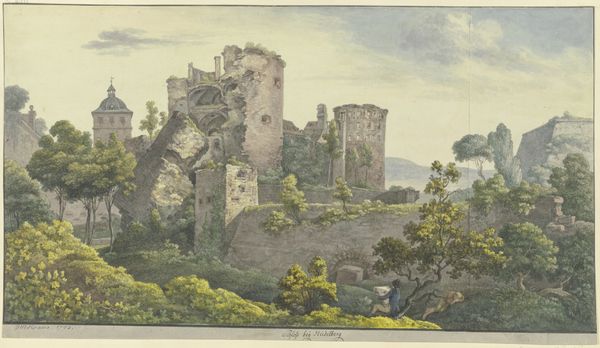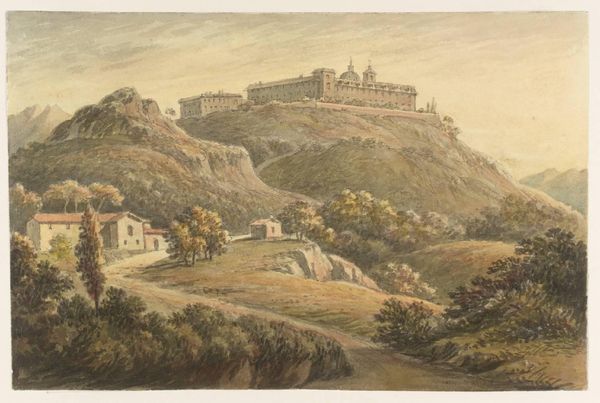
drawing, plein-air, watercolor
#
drawing
#
water colours
#
plein-air
#
landscape
#
watercolor
#
coloured pencil
#
romanticism
#
cityscape
Dimensions: sheet: 25.5 x 36 cm (10 1/16 x 14 3/16 in.)
Copyright: National Gallery of Art: CC0 1.0
Editor: This is “Le Château d'Eze, pres de Nice” by Mathias Gabriel Lory, created sometime between 1841 and 1843, using watercolors and colored pencil. The detail is just astounding; you can practically feel the heat radiating off the stone buildings. What do you see in this piece that I might be missing? Art Historian: Oh, this transports me! Look at the light! See how it dances on the rugged cliffs, casting long, lazy shadows? For me, it is less a literal rendering and more an evocation of place. Almost like a hazy dream. Think of the Romantic period… nature’s power, but tempered with a human presence – the town clinging to the cliff. Does it make you feel small, that vastness? Editor: Definitely a bit humbled, but also safe, somehow. Like the town's been there forever, a constant in the landscape. So, do you think the artist was aiming for that sense of timelessness? Art Historian: I do! Lory wasn't just painting a château; he was capturing a feeling, an enduring spirit. Notice the figures on the path, so small against the backdrop. It suggests a journey, a pilgrimage almost. What do you make of the framing—the oval shape? Editor: It’s almost like looking through a telescope or some kind of romantic window! Adds to the dreaminess. Art Historian: Precisely! It's a focused view, drawing us into that particular moment in time, that feeling. I wonder, if we could step inside the frame, what stories would those stone walls whisper? Editor: That’s beautiful! I'll definitely look at landscapes differently now, thinking about the stories and feelings behind the image.
Comments
No comments
Be the first to comment and join the conversation on the ultimate creative platform.
